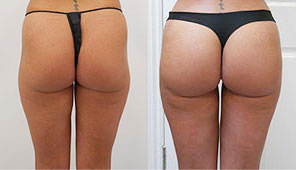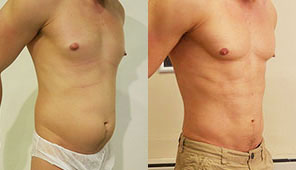What Is Botox?

Botox is a neuromodulator that relaxes the muscles, creating a smoother, more youthful appearance. Everyone globally accepts it as a cosmetic enhancement tool.[1] Once feared as a serious toxin, it has since been rediscovered as a highly regarded anaesthetic agent.[2] It works by targeting the nervous system and blocking the release of a chemical called acetylcholine, which is what our body uses to contract our muscles. Botox stops the muscles from contracting, reducing wrinkles’ appearance with more relaxed facial muscles.
Book a consultation with us now or give us a call at 0207 127 4377.
If you are reading this, you have probably been considering getting Botox yourself. You are most likely curious about possible side effects. It’s normal to have concerns. It is a medical procedure, after all. However, Botox is safe and effective when administered in appropriate doses. Below, you will find out what to expect to have the best experience before and after your procedure.
In the meantime, please feel free to explore our blog, where you can get familiar with the other procedures we provide at The Hamlet Clinic located in London, England.
Side Effects
Although Botox is approved for cosmetic use in the UK, there are still some potential risks (just as there are with any elective procedure). The body’s response to the injection can vary from person to person. One dose might not be enough for one patient, and in another, it could be too much. Most of these side effects are brief and usually resolve themselves. It is good to educate yourself to know what to expect so you can have the safest experience possible. You may encounter adverse side effects if your injections are not prepared to the highest standards. You should always consult with a certified specialist when opting for cosmetic procedures. Do not get Botox if you are pregnant or breastfeeding.
Possible Side Effects
- Dry eyes
- Sometimes, Botox can accentuate dry eyes. Depending on the placement of the injection site, it can interfere with the blinking reflex.
- To alleviate this condition, use eye drops until symptoms fade.
- Mild pain, swelling, and bruising
- Pain, swelling, and bruising are normal for Botox injections. Bruising occurs when the blood vessels are damaged and bleed into the neighbouring area.
- Avoid blood thinners
- Avoid alcohol the day before and after the injection.
- Avoid strenuous activity for 2 to 3 days after treatment.
- Apply ice to the affected area continuously for 2 to 3 days following the procedure.
- Pain, swelling, and bruising are normal for Botox injections. Bruising occurs when the blood vessels are damaged and bleed into the neighbouring area.
- Flu-like symptoms
- These symptoms are usually mild and can occur within a month after injection.
- To treat these symptoms, one should:
- Drink lots of water
- Hot baths
- Use a humidifier
- Plenty of rest
- Take over-the-counter medications like Paracetamol
- Breathing or swallowing difficulties (dysphagia)
- It can happen when the toxin spreads to the muscles surrounding the injection site.
- This issue generally occurs within 2 to 10 days after the procedure and usually fixes itself.
- Talk to your doctor immediately if you are experiencing symptoms to adjust your future doses accordingly.
- What you can do about it:
- Chew small mouthfuls of food.
- Try to avoid anything crusty or hard.
- Keep a water bottle nearby.
- If drinking proves to be difficult, try sitting up and using a straw.
- Chew small mouthfuls of food.
- Irregular heartbeat
- Call your doctor right away if you have chest pain, pressure, or an irregular heartbeat following your procedure.
- Dry Mouth
- Symptoms can include:
- Trouble swallowing
- Thick and stringy saliva
- Sticky and dry mouth
- Hoarse throat
- These symptoms usually pass within a few days and can be treated by:
- Drinking water
- Avoiding breathing through the mouth
- Alcohol-free mouthwash
- Sugar-free gum
- Sugarless candy
- Symptoms can include:
- Constipation and nausea
- Symptoms can range from a couple of days to two weeks and are reported as being mild to moderate.
- You can treat these symptoms through:
- Light exercise
- Low-fat foods
- Fibre supplements
- Fruits and vegetables
- Warms baths
- Ginger tea
- Numbness
- Some patients report feeling numb or tingly around the injection site. Symptoms are generally mild and usually only last for a couple of days.
- Temporary drooping of the eyelid
- When people get their forehead treated, sometimes the Botox can bleed into the upper eyelid area, causing the muscles that support it to sag.
- Symptoms fade away within 4 to 6 weeks.
- To treat a drooping eyelid, you should:
- Get additional Botox treatments to counterbalance the relaxed muscle.
- Take apraclonidine eye drops.
- Headaches
- To this day, it is still unclear as to what causes the headaches. Some of the theories are:
- Accidentally bumping the forehead.
- Impure Botox.
- Over-contracting facial muscles.
- If you are experiencing headaches after your treatment, simply take an over-the-counter pain medication.
- To this day, it is still unclear as to what causes the headaches. Some of the theories are:
Allergic Reactions?
Although uncommon, allergic reactions to Botox are possible. Talk to your doctor immediately if you experience any of the following symptoms:
- Itching
- Hives
- Dizziness
- Wheezing and breathing difficulties
- Swelling of the face, lips, tongue, or throat
- If breathing difficulties become severe, seek assistance
Benefits
Botox eliminates facial creases, wrinkles, and fine lines by calming the muscles. It’s non-invasive, relatively quick, and can be done in your doctor’s office. It’s a great way to alleviate insecurities related to ageing and helps patients look good and feel good.
Candidates
Talk to a medical professional first about whether you would be the right candidate for Botox treatments. An ideal candidate for the procedure would be somebody who:
- Has unwanted facial wrinkles
- Has wrinkles located on treatable areas like the forehead, neck, and between and around the eyes.
- Is in good health.
- Has realistic expectations.
Do not seek out Botox treatments if you:
- Are allergic to any of the ingredients in Botox.
- Are pregnant or breastfeeding.
- Have infected skin at the agreed-upon injection site.
- Have a severe infection or illness.
- Suffer from nerve and muscle conditions like amyotrophic lateral sclerosis (ALS) or myasthenia gravis.
Personal Consultation
Request a personal consultation with us as soon as possible if you think you would be an ideal candidate for Botox treatments.
Preparation
First, you want to make sure you are referred to an experienced physician who has specialized training in these types of injection treatments.
Avoid taking any blood-thinning medications for several days before your procedure to reduce the risk of bleeding and bruising.
Procedure
The procedure itself is relatively quick and usually takes place in the doctor’s office or med spa. First, your doctor will numb the area with a topical anaesthetic. They will then dilute the Botox powder in saline and inject it into the neuromuscular tissue. The process overall can take up to 30 minutes, depending on the number of injections received.
Recovery
For the next 24 hours after the injection, you must resist the urge to interfere with, rub, or massage the treatment area. Afterwards, you may resume your daily activities within reason. Don’t engage in intense physical activity for the next day or so. Botox results can take up to 24 to 72 hours to fully take effect and, depending on the treatment level, can last up to 3 to 5 months. Maintaining the results will require follow-up injections to be arranged.
Cost
Your Botox treatments cost will depend on the number of units used and the number of areas you are having treated. Please feel free to schedule an in-person consultation to receive an estimated quote. Ask us about occasional specials offered by the manufacturer.
FAQ
How does Botox work?
Botox works by blocking the release of the chemical that contracts our muscles, causing them to become relaxed and serene. It decreases the muscle movements that cause fine lines and wrinkles.
What areas of the face can Botox treat?
* Around the eyes (crow’s feet)
* Between the eyebrows (frown lines)
* Horizontal lines on the forehead
* Chin
* Lines on the corners of the mouth
What does a Botox treatment feel like?
Although there is some initial discomfort from the injection, the process is generally not considered painful.
How long will my Botox results last?
Depending on your treatment level, Botox can last up to 3 to 5 months before it gets metabolized in the body. Routine maintenance will be required every couple of months to preserve the Botox’s effects.
Is Botox safe?
Yes. The NHS approves the use of Botox for cosmetic purposes, but you should not seek the treatment if you are pregnant, breastfeeding, or suffer from certain neurological diseases.
How do I know if Botox is right for me?
Schedule a consultation with your doctor to discuss your goals and whether or not you’d be a good candidate for Botox.
How should I prepare for Botox treatments?
To prepare for Botox, you will want to avoid drinking alcohol and taking blood-thinning medications like ibuprofen, aspirin, ginseng, or Ginkgo Biloba.
References
- Ting, P. T., & Freiman, A. (2004). The story of Clostridium botulinum: from food poisoning to Botox. Clinical medicine (London, England), 4(3), 258–261. https://doi.org/10.7861/clinmedicine.4-3-258
- Carruthers, J., & Carruthers, A. (2007). The evolution of botulinum neurotoxin type A for cosmetic applications. Journal of Cosmetic and Laser Therapy,9(3), 186-192. doi:https://doi.org/10.1080/14764170701411470





